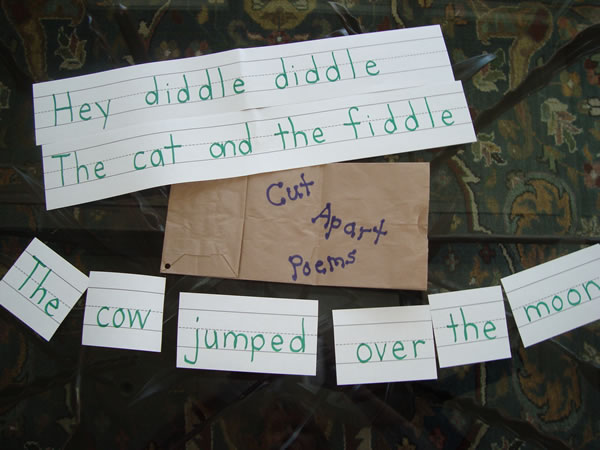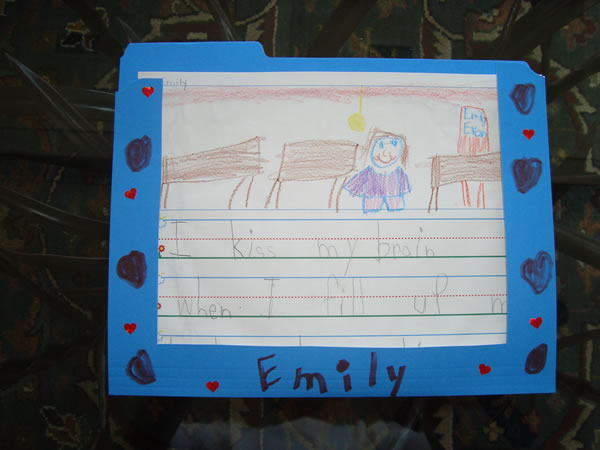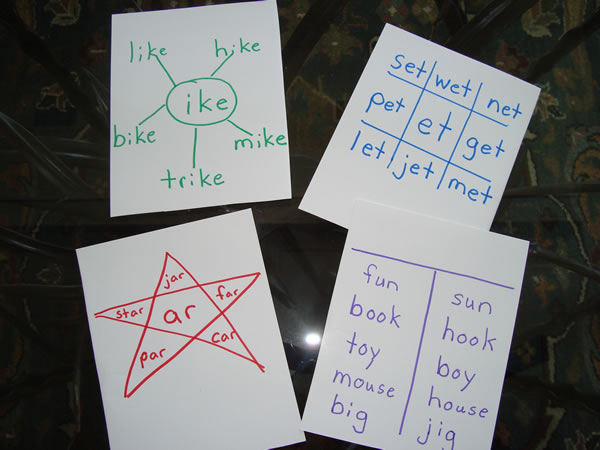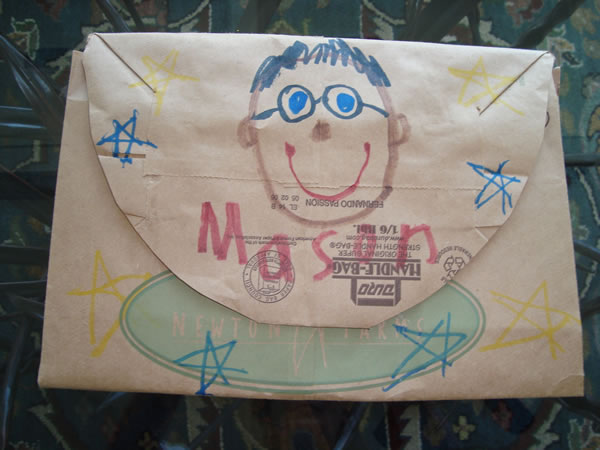

WHY? comprehension, emotions
WHAT? poems
HOW? Being able to visualize what is happening in a story, poem, or text
is a strategy for improving comprehension. Have children close
their eyes as you read different poems to them. Encourage the
children to make a picture in their brains to go along with what
they hear. After listening to the poem, encourage the children to discuss
the pictures that they made in their heads.
MORE? Divide children into pairs and have them describe (a.k.a “think out loud”)
what poems mean with their partner.
Ask the children to draw pictures or write about emotions the poem
evoked.
What other places or things did this poem make you think about?
Challenge children to connect what they’ve read to own their lives!
WHY? critical thinking, comprehension; analysis
WHAT? variety of poems
HOW? Ask questions similar to those below after reading different poems.
Did you like it? WHY? Why not?
Do a hand vote by holding up 1-5 fingers (five being the highest).
If the poet could tell you what she had in mind…
If you could ask the poet a question…
How did the poem make you feel? Is it a happy poem? Sad
poem? Angry poem? Love poem?
Does it rhyme?
How many syllables are in each line?
Is it real or pretend? (Fiction or non-fiction?)
Read poems different ways (with different voices). Which one
fits the poem best?
Is it a narrative poem? Does it tell a story?
Is it a lyric poem? Is it like a song?
What is the setting? Is there a main character? What is the main
idea?
WHY? concept of word, fluency
WHAT? sentence strips, pocket chart, markers, scissors, lunch sack
HOW? Write the lines of a short poem or nursery rhyme on sentence strips. Place
these in a pocket chart and model reading them as you sweep your hand
from left to right under the words. Invite the children to reread the poem
3 or 4 times. Next, take a sentence strip from the pocket chart and cut
between the words. Place the words in a lunch sack and give it to a child. Ask the child to “shake up” the sack and then try to arrange the words in the pocket chart in correct order. Ask the child to read the sentence as she points to the words. Invite the other students to reread the line with you. Continue cutting up the lines of the poem and then ask children to
rearrange the words.
Put the words back in the pocket chart in the wrong way and read them.
MORE? Type a simple poem using a large font on a piece of paper. Have the
children cut between the lines and the words. Next, ask them to
rearrange the words on a piece of construction paper. Finally, ask them to
glue the words on the construction paper and reread the poem.
Hint! Children who are struggling may need a model of the poem
to enable them to arrange the words in the correct order.

WHY? interest in reading and writing
WHAT? language experience chart, markers
HOW? Ask the children, “What do poets do?” Write their responses on a
language experience chart. As you write their responses, comment,
“You know, we can do that, too.” Next, ask them, “Who can be a poet?”
Encourage them to think of themselves as poets because they can
all write poems!
MORE? Invite a local poet to speak to your class. Most poets have other jobs and
poetry is their avocation. This is an important concept for children. You can be a teacher, a cowboy, or a nurse - and be a poet, too!
Take a “Poetry Field Trip” on the internet and see if you can find
sites with poems for children.

Fold a sheet of construction paper in half. Trim the inside section to
POCKET create a 1 ¼” frame as shown. Let children decorate the frame with
their name, pictures, stickers, etc. Open and laminate. Fold in half again
and tape the sides to create a pocket. Staple to a bulletin board or tape to
children’s lockers. Let children write poems and display them in their
poetry pockets. This way all children’s work can be displayed and they
can make their own decisions about what they want to share with others.
Hint! You can also use a file folder to make a poetry pocket.
WHY? integration of reading and writing
WHAT? paper, pencils, pens, markers, overhead, chalkboard, poetry books
HOW? Ask the children, “What is a poem? Do poems have to rhyme?
Do they have to make sense?” Take a common word and write
it on the board. Have children brainstorm all the words that rhyme
with that word. Encourage each child to think of two sentences using
the rhyming words. Write the children’s two line poems on the board as they dictate them. Read over the poems after you write them.
MORE? Challenge each child to take a word and write all the words that they
can think of that rhyme with their word. (They could use their name,
a holiday, favorite color, food, a vocabulary word from a unit of study,
etc.) Next, have them write two or more simple sentences using the
rhyming words. Invite children to read their poems to classmates
WHY? integration of reading and writing, phonics
WHAT? writing materials
HOW? An acrostic is an easy way to begin writing poetry. Model how
to do this on the board by writing a word vertically. Have
children to think of a word that begins with each letter. Read
over what you have written, and you have a poem.
Name Acrostic – Children think of a word that describes them for
each letter in their name.
Holiday or Season- Write the holiday or season and then add an adjective
that begins with each letter.
Non-fiction – Write a vocabulary word from a unit or theme and then
challenge children to write a word that begins with each letter.
Real Object – Have children observe a real object and then write an
acrostic poem about it.
Field Trip- Follow up a field trip with an acrostic poem.
WHY? vocabulary, parts of speech, rhyme and alliteration
WHAT? overhead, chart paper, dry erase board, etc.
HOW? Write several lines of poetry, leaving blanks at the end of each line.
Encourage the children to fill in words that rhyme. Have them help
you sound out the words as you write them. For example:
I saw a pig
Who could ______.
I saw a cat
Who could ______.
I saw a sheep
Who could ______.
And I can rhyme
Any time!
Give each child a sheet of paper with a different rhyme and a blank.
Ask them to fill in a rhyming word and illustrate their sentence. Put these
together to make a collaborative book.
MORE? Have children brainstorm words that rhyme with “pig” or whatever
word is in the sentence. Try out these words and let the children
choose the one that they like best.
Use similes for blank poems. For example, children could fill in the
line to “Hungry as a _____. Quiet as a______. Sleepy as a ______.
Mad as a _______. Good as _______. Sweet as ______.” And so on.
WHY? motivation to write and read, vocabulary, fluency
WHAT? paper, pencils, crayons, and other writing paraphernalia
HOW? Encourage beginning writing and poetry by giving children
predictable sentences similar to the ones below. All children
have to do is fill in a missing word, and they’ll have a poem.
Hint! They can use words that rhyme, nonsense words, or words that
don’t rhyme.
| I like_____. | I want____. |
| I like _____. | I want____. |
| I like _____. | I want____. |
| Do you like____? | But I don’t want____. |
| I can _____. | I feel____. |
| I can_____. | I feel____. |
| I can_____. | I feel____. |
| Can you_____? | Do you feel_____? |
MORE? I know….I wish….My mom is…Dogs can….Spring is….Green is….
A square is… My favorite…I like to eat…
Write predictable poems using the five senses. It looks like…It sounds
like…It tastes like… It smells like…It feels like…It’s a ….
Integrate holidays, topics of study in science or social studies, current events, characters from literature, etc. into predictable poems.
Add different punctuation to the end of three similar lines. Have the
children read each line inflicting the appropriate expression. For
example:
I can fly.
I can fly!
I can fly?
WHY? creativity, writing skills
WHAT? writing materials, common objects
HOW? Ask the children to look at their shoes. “If your shoe could talk, what
would they say to you?” Encourage divergent answers. Walk around the
room and point to other common objects. “If this book were alive, what
would it say?” “If this lunch box could tell you something…” and so
forth.
Next, give children a sheet of paper. Have them draw a picture of
an object in the classroom. Ask them to write or dictate something the
object might say if it could talk. Put their papers together to make a
book and read it to the class.
MORE? Bring in the cartoon section from the newspaper. Call children’s attention to the dialogue bubbles that come from the characters. Draw a dog, chair,
or other object on the chalkboard. Draw a bubble coming from the object
and let children suggest different things you could write in the bubble.
Can you think of a rhyme to go in the bubble?
Cut pictures from magazines and give one to each child to glue in the
middle of a piece of paper. Have them draw a bubble from the box and
write a rhyme that the picture might say.
Play “What if…”
What if you were the wolf in the “Three Little Pigs.”
What would you say?
What if you were the grandmother in “Little Red Riding Hood.” What would you say?
Play the “what if” game using specific situations or familiar characters.
WHY? brainstorming, non-fiction writing
WHAT? writing materials
HOW? Draw a visual graphic (attribute web, tic-tac-toe, star of knowledge, etc.)
on the board. Write a word in the middle and challenge children to think
of rhyming words to fill in the web. Next, ask them to write a poem using
the words as a catalyst.

WHY? interest in writing, assessment
WHAT? paper grocery sack, scissors, markers, Velcro strip
HOW? Place the grocery sack flat on the table. Cut around three sides of the
bottom and then cut a curve as shown. Fold the bag in half and tuck
under the curve. Secure the flap with a piece of Velcro. Let children decorate their sacks with markers or crayons. Have children store their
poems and other writing samples in their portfolios.
Hint! Make sure children date their work.
MORE? Let children take their portfolios home once a month to share with their
parents. Encourage parents to write responses to their children’s work.
 |
 |
WHY? phonological awareness, fluency, creative writing
WHAT? magnetic poetry words (available at dollar stores and bookstores),
magnetic board, rhyming games, overhead transparency and markers,
pens, pencils, colored pencils, chalk, paper, blank books, colored paper,
notepads, envelopes, construction paper, stickers, glue, chalk board, wipe
off board, clip boards, stamps and other writing instruments
HOW? Create a literacy center where children can construct poems and
enjoy some of the activities below:
Magnetic Poetry – Children arrange words and write original verse
using a magnetic poetry kit.
Wall Poems – Children write poems on overhead transparencies
and then project them on a wall.
Shape Poems - Cut paper into seasonal shapes. Invite children to write
poems and rhymes on the shapes.
Note Cards – Offer children stamps and stamp pads to create original
cards for friends and family members.
Poetry Explorations – Invite children to take clipboards out on the playground and write poems.